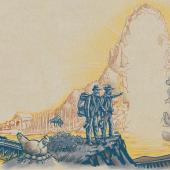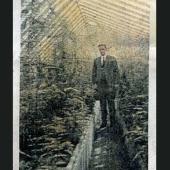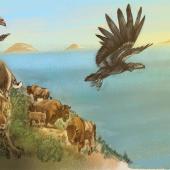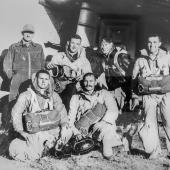The American Indian Institute
For the Love of Another Outstanding Non-Profit
The story of the American Indian Institute is the story of long, patient endeavors required to build trust and understanding among groups with vastly diverse interests and world views.It is a nearly 40-year long story that represents no more than a moment in the ancient history of which it is a part. And, it is a success story among the many failed attempts to draw together peoples of differing cultural and ethnic backgrounds in peaceful, mutually respectful coexistence.

A Two-Circles Structure
In August 1977, at the Headwaters of the Missouri River, Institute founder Robert Staffanson organized the first gathering of what came to be known as the Traditional Circle of Indian Elders and Youth. The Crow Nation hosted that gathering of approximately 35 American Indian spiritual leaders. They traveled from the four directions to work together in forging the Two-Circles relationship between the Traditional Circle and the American Indian Institute.


That unique structure is based on ancient Native American understandings as symbolized by the Two Row Wampum.
The two Circles are equal yet separate, fulfilling their common purposes with mutual respect, and responsibility. The Traditional Circle is composed of grassroots spiritual leaders from Indian nations throughout North America. Structured in t he ancestral way, it serves as a living repository of indigenous wisdom and values. The Traditional Circle’s sister circle, the Institute, is a typical charitable organization, headquartered in Bozeman, Montana. It is a community of interest — non-Indians dedicated to the survival of indigenous heritages and wisdom.
Accomplishments of the Two Circles Working Together
Each year since the Missouri Headwaters meeting in 1977, an International Council of the Traditional has taken place, hosted by an Indian Nation in a location of its choosing.
As a part of the Two Circle’s efforts to increase intercultural awareness and appreciation, the Institute helped organize a tour of Japan in 1988 and 1989 with a festival of native North American arts, including Indian dance and visual arts.


The Institute also serves as the fiscal agent for the Iroquois Nationals lacrosse team.
The Institute helped organize and fund a delegation of indigenous peoples of North America to attend the Global Forum of Spiritual and Parliamentary Leaders in London, Moscow and Kyoto. In 1993, another delegation went to the Global Forum held in Kyoto, Japan. Another Traditional Circle delegation attended ,the Fourth World Wilderness Congress in Denver in 1987 and participated in the international Environmental Summit held in Rio de Janeiro in 1992.
With the guidance and participation of the Traditional Circle, the Institute established a unique intergenerational program, Healing the Future, for Indian youth and families in 1996. The program combined traditional healing and ceremonial experiences with intervention and counseling activities to build on the strengths of Native communities to care for one another and the Earth.
In 2004, the Institute launched its Traditional Indian Youth Leadership Initiative based on traditional approaches to educating Indian youth in the ways of their traditional spiritual and cultural heritages.
Beginning in 2006, the Institute developed and managed a series of forums titled Ancient Voices – Contemporary Contexts. The principal objective of the Forums is to fulfill a 2005 Elders Circle mandate: “get the Elder voice out” and get dialogue started across cultures.

The essential elements of the Elders’ message include:
- We are destroying the earth and the life on it.
- We are killing each other. War and genocide are rampant in many parts of the world because of race, ethnicity, religion, and greed. The same factors, along with drugs and alcohol, are at work in subtler ways throughout the world.
- The ancient and proven indigenous voice is the only one that takes a holistic view of both environmental and social destruction. It is spiritual, unencumbered by religious dogma. It is not parochial or selfish, and can be a saving factor in meeting the issues that threaten the world.
Current programming includes Meetings of Indigenous Timekeepers and Weaving Webs of Women’s Wisdom gatherings.
Institute Founder, Robert Staffanson recently released his memoir, Witness to Spirit: My Life with Cowboys, Mozart and Indians. In it Staffanson gives the reader an intimate look into his amazing life and the improbable history of the Two Circles.
Contact information:
American Indian Institute
502 West Mendenhall Street
Bozeman, MT 59715
Lisa Sutton: [email protected]












Leave a Comment Here